|
UNI33 - Matrix Mixer
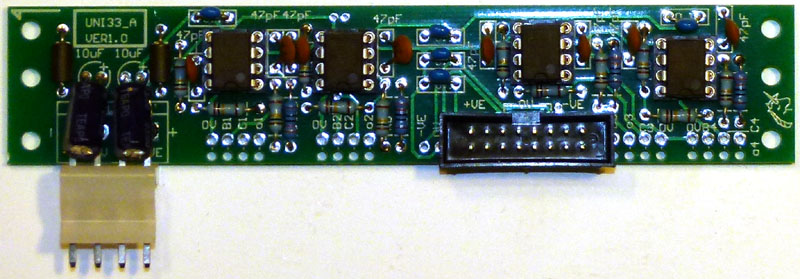
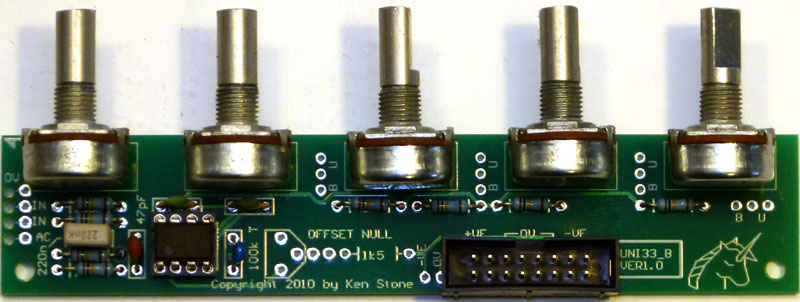
The matrix mixer is a multiple input, four output bipolar or unipolar DC coupled mixer, for mixing control voltages or audio signals. In cases where you require several different mixes from a common set of signals, this module is ideal. Each output can be independently switched to operate in unipolar or bipolar mode. When in unipolar mode, all pots feeding that output behave in regular fashion, that is when the knob is fully counter-clockwise, no signal from the associated input passes into the mix. As the knob is advanced clockwise, a greater portion of the signal passes into the mix. In bipolar mode, each knob has a zero position mid-way through it's travel. Turning the knob anti-clockwise will add an increasing portion of a negative (inverted) version of the signal at the corresponding input, while turning the knob clockwise will add an increasing portion of the original signal to the mix. Each column has the option for three inputs, two DC coupled, and one AC coupled for audio use. The builder chooses which inputs to use. Each column also as a master level control, ranging between zero and unity gain.
A little on how it works:
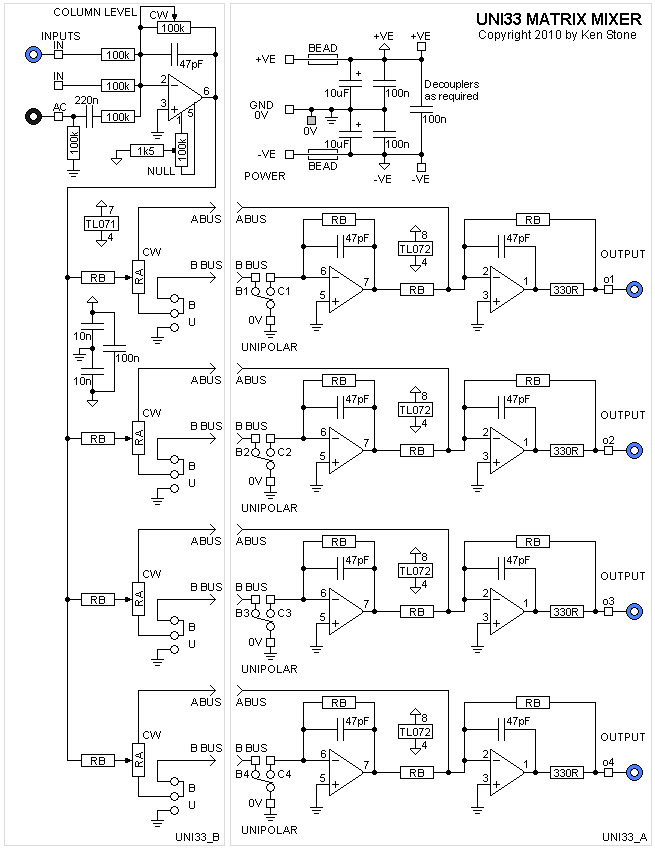
The schematic, showing one input buffer and the master summers for the Matrix Mixer.
As is obvious from the circuit diagram, the matrix mixer is little more than a group of standard op-amp summing circuits.
Each column consists of an op-amp input stage and four pots. Any signal applied to an input is first buffered by an inverting summer based around a TL071 op-amp. The gain of this stage can be controlled by the pot in its feedback path. Three inputs are provided on the PCB, two DC coupled and one AC coupled via a 220n capacitor.
The buffered signal is then fed to the wipers of four pots, which direct the signal in varying proportions to the A and B buses.
The pots steer the signal to either the first or second op-amp of the mixer in bipolar mode, or the first op-amp or ground in unipolar mode. Any signal that is sent to the first op-amp is inverted, then mixed with any signal being sent to the second op-amp. This signal is then inverted again, and sent to the output jack.
Construction


The component overlays.
Click images for enlarged versions.
On the UNI33B column PCB there is provision for an offset null trimmer. These (and their associated 1k5 resistors) can be omitted as they are only there for experimenters. If you don't know what they are for, you don't need them and they are not included in our kits.
Other chips can be substituted for the TL071 (single op-amp) and TL072 (dual op-amp) if desired.
Column boards are connected to the main board via a 16 way ribbon cable and 16 pin insulation displacement connectors. For each additional column board used, you need only add another connector to the same ribbon cable. 90° mounting box headers would be ideal for this, although, as the photo's show, regular box headers can be used if the insulation displacement connectors are spaced further apart on the ribbon cable.
The master PCB (UNI33A) has several mounting holes, allowing it to be bolted to one of the column boards at different heights, depending on your construction preferences. This also gives clearance for use of a standard power connector.
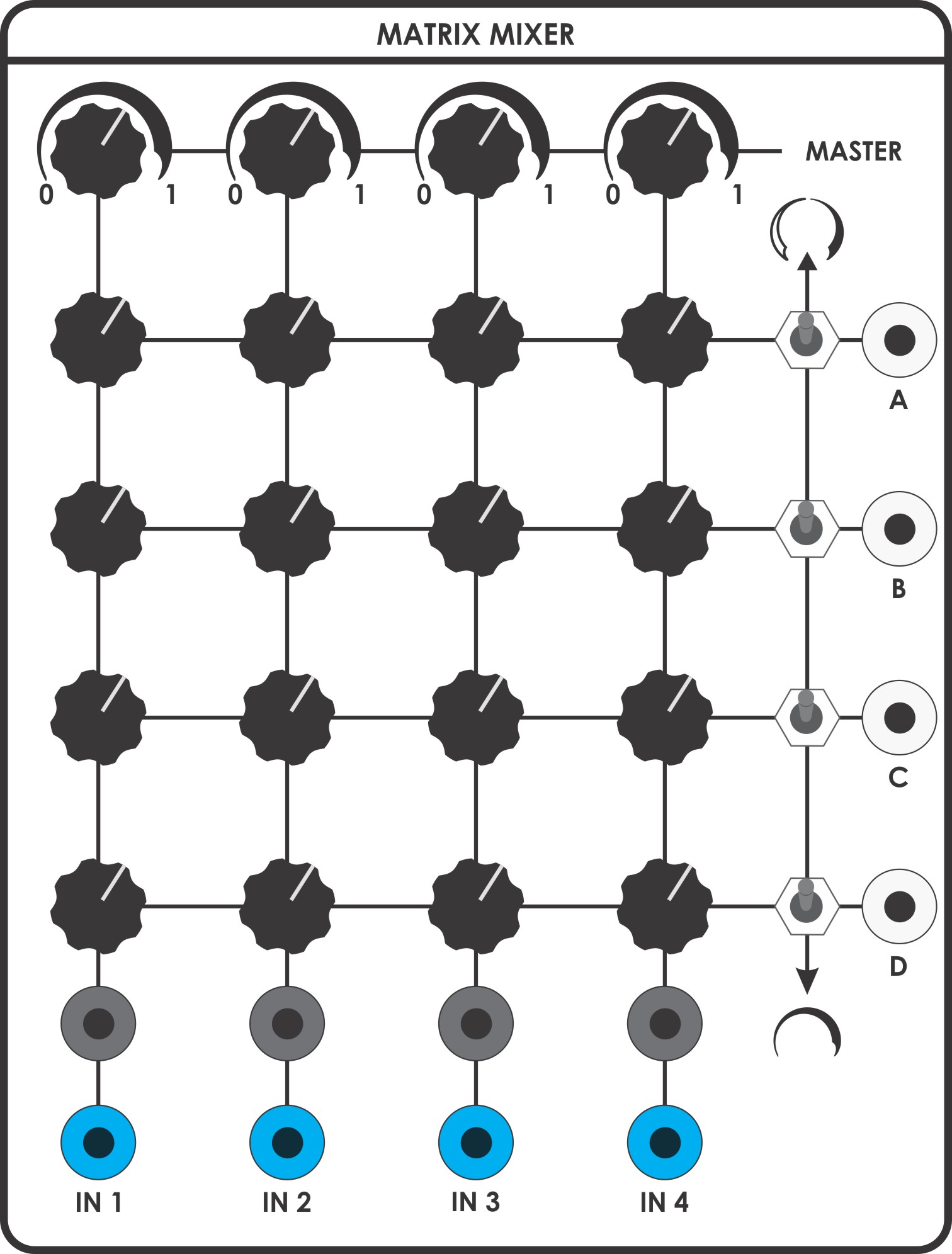
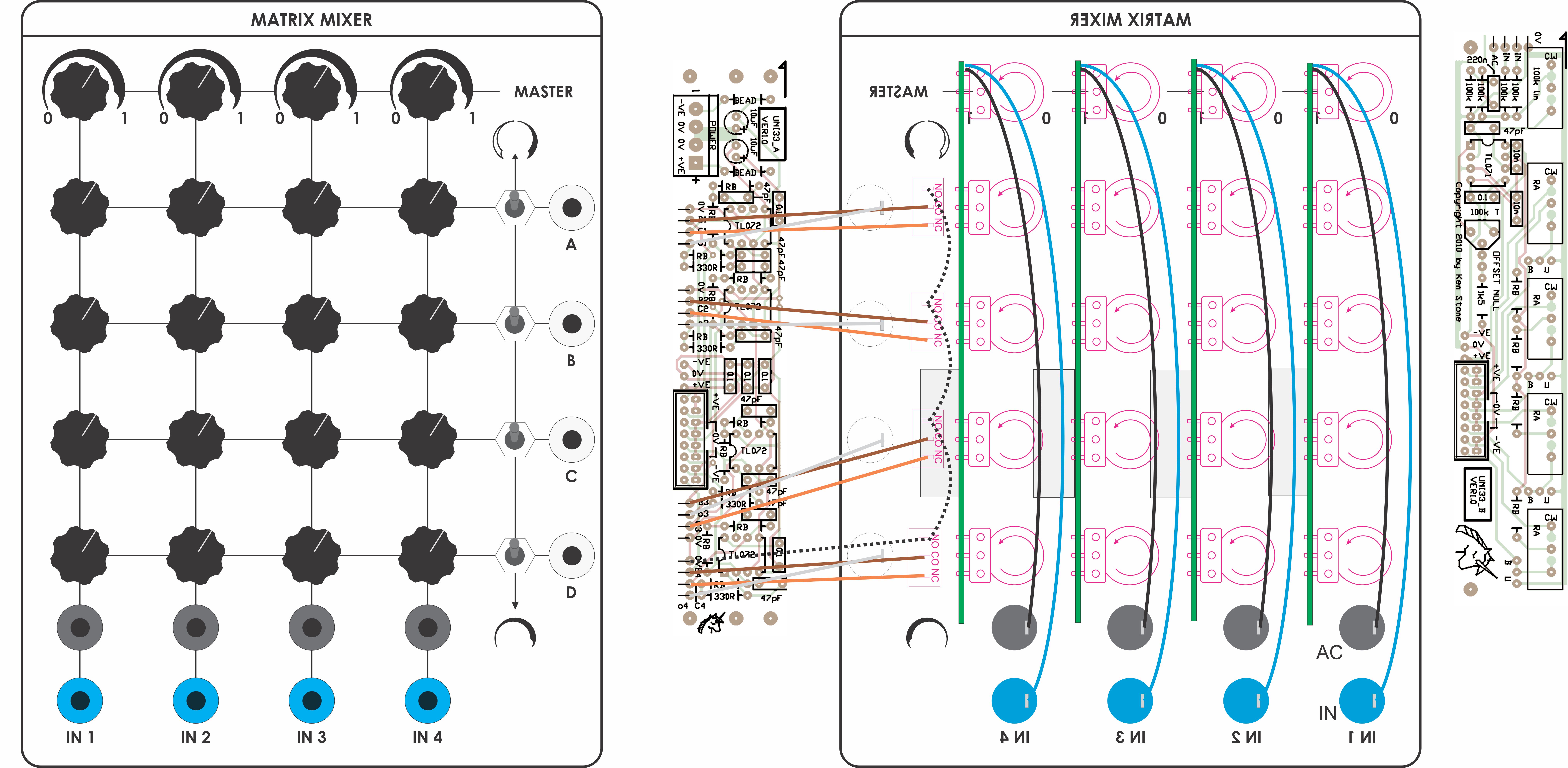
Wiring Diagram
| PAD ID | Function |
| +VE | Spare +VE connection |
| -VE | Spare -VE connection |
| 0V | CCW end of FB pot, 0V connection to 3.5mm jacks |
Pot and Resistor selection (RA and RB)
The ratio of the value of the pot (RA) to that of the fixed resistors (RB) used in the processor will affect the response of the pot. The pot itself MUST be linear. For example, with RB = 100k, a 50k pot for RA will produce a slightly anti-log response. A 100k pot would produce a linear response.
For RB = 100k:
- RA = 10k - Anti-log response - Greater sensitivity near center of rotation. Finer control towards ends of travel.
- RA = 100k - Linear response. Mostly for CV mixing
- RA = 1M - Log response - Finer control near center of rotation. Greater sensitivity towards ends of travel. Mostly for audio mixing
For RB = 10k:
- RA = 10k - Linear response. Mostly for CV mixing
- RA = 100k - Log response - Finer control near center of rotation. Greater sensitivity towards ends of travel. Mostly for audio mixing
Recommended choices are in bold.
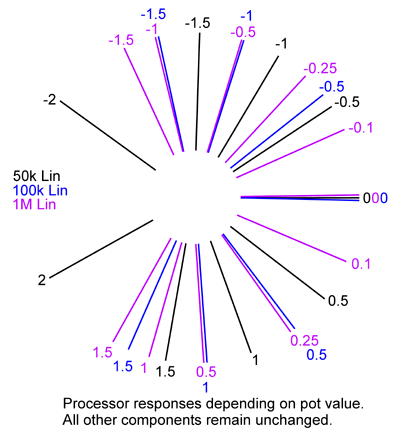
Setup:
The only adjustment that is needed is the Offset Null adjustment.
- Apply a 0v patch to [IN 1] and set [MASTER 1] to '1'. Monitor [OUT 1] with a meter set to 'DC mV'. You may see an 'offset' voltage of up to a few 10's of mVs. Adjust the 'NULL OFFSET' trimpot to get this as close to 0V as possible.
Repeat for the other 3 channels.
Notes:
- Board dimensions: 5" x 1". Pots are spaced at 1".
Parts list
Article, art & design copyright 2008 by Ken Stone
|